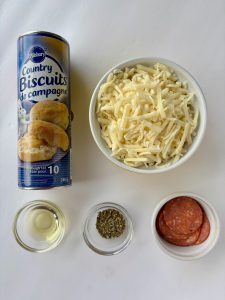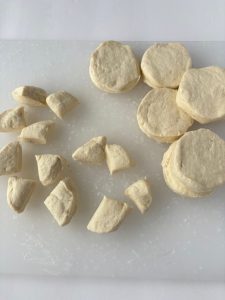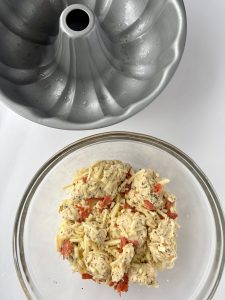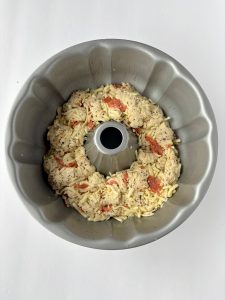 April 22 is Earth Day! Here are 10 easy ways to eat better for the planet – today and every day!
April 22 is Earth Day! Here are 10 easy ways to eat better for the planet – today and every day!
1. Make a no-cook meal. Try a yogurt parfait with granola and fruit on top. Pack a peanut butter sandwich for lunch. For dinner, how about a leafy green salad with grated carrots, cucumbers, tomatoes and canned fish (dig out that manual can opener from the bottom of your drawer instead of using an electric one).
2. Join the Meatless Monday movement. More energy is typically needed to produce meat compared to grains, legumes, fruit and veggies. Try a meatless meal at least once a week, like my Bean, Avocado and Corn Salad, Chickpea Lettuce Wraps, BBQ Tofu Burger or Lentil Bolognese.
3. Steam your food. You’ll conserve water by steaming rather than boiling. And here’s the nutritional bonus: steamed veggies stay tender crisp and very little vitamins and minerals are lost in the cooking water.
4. Multi-purpose your water. I used to warm up the kids’ thermoses with hot water as I made their lunches. Instead of dumping all that water down the drain, I re-purposed the hot water to make a nice pot of green tea. Do you have “leftover” water in your kettle? Cook with it. Wash your dishes with it. Pour it into a pitcher and refrigerate it – now you don’t have to run the tap when you want a glass of cold water!
5. Reduce food waste. The food that we toss out can end up in landfills where it decomposes and produces methane gas, contributing to climate change and global warming. So buy only what you need. Store food properly, use leftovers creatively and freeze any extra food. Use all parts of the animal and vegetable whenever possible. My dad makes an incredible soup with pig’s feet! One of my all time favourite veggies is beets because I can use practically everything from root to leaf!
6. BYOC. Bring your own containers. If you’re going out for dinner, bring your own food containers for leftovers. Some coffee shops may also allow you to bring a reusable mug for take-out beverages.
7. Buy from the bulk store. It will help you buy only what you need. Plus it cuts down on all that unnecessary food packaging. Ask the store if you can bring in your own containers too so that you don’t have to use as many plastic bags.
8. Reduce your “cookprint”. Your cookprint is the amount of energy that’s needed to prepare and cook your meals. Speed up your cooking time and dial down your energy use by keeping the lids on pots. Use smaller, energy efficient appliances like a toaster oven, air fryer, pressure cooker or crockpot.
9. Be a locavore. Eat locally grown food whenever you can because it helps reduce the transportation and carbon footprint from farm to plate. Build on this idea and think about your own transportation when buying groceries. Can you walk, cycle or take transit to get your groceries?
10. Grow your own. Gardening season is right around the corner. Get outside, dig into the soil, and get planting! On my list this year are cherry tomatoes, herbs and you guessed it – beets! You’ll love the taste of home grown produce and Mother Earth will thank you for it too!
 Disclosure: This post was sponsored by the Canadian Beverage Association, and I have received monetary compensation. As always, my own professional opinions and views are expressed.
Disclosure: This post was sponsored by the Canadian Beverage Association, and I have received monetary compensation. As always, my own professional opinions and views are expressed.




 Last summer at my annual check-up, I found out that my blood cholesterol level was HIGH – it was over 6.2 mmol / L.
Last summer at my annual check-up, I found out that my blood cholesterol level was HIGH – it was over 6.2 mmol / L.

 It’s Heart Month and our food choices can have a big impact on our heart health.
It’s Heart Month and our food choices can have a big impact on our heart health. Alright, we all know that eating fruits and veggies are good for you. In fact, eating at least 5 servings of fruits and veggies every day can lower your risk for health problems such as heart disease and type 2 diabetes.
Alright, we all know that eating fruits and veggies are good for you. In fact, eating at least 5 servings of fruits and veggies every day can lower your risk for health problems such as heart disease and type 2 diabetes.

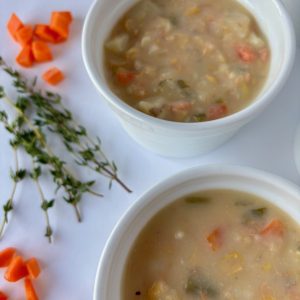
 As we begin the new year, some of you may be thinking about changing your eating habits. The typical behaviours I hear involve cutting out certain foods or ingredients, such as cutting out sweets, cutting out snacks or cutting out fried foods.
As we begin the new year, some of you may be thinking about changing your eating habits. The typical behaviours I hear involve cutting out certain foods or ingredients, such as cutting out sweets, cutting out snacks or cutting out fried foods.

